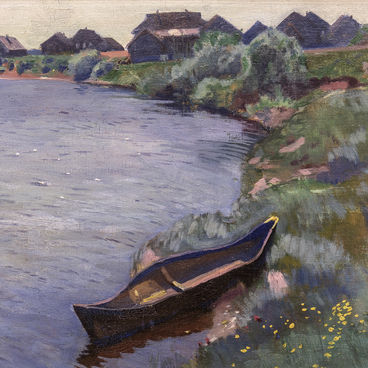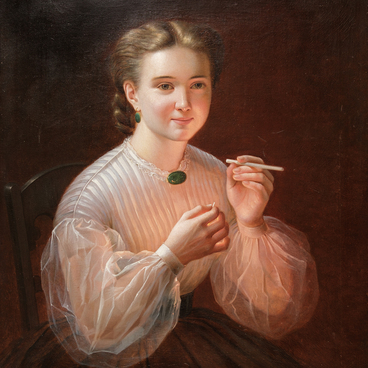Pavel Varfolomeyevich Kuznetsov was a major Russian Symbolist artist of the turn of the 20th century. His first meeting with art happened in the workshop of his father who was a painter and iconographer. Later, Pavel Kuznetsov studied under the guidance of Konstantin Korovin and Valentin Serov. Through his studies, he met many friends and like-minded individuals who later formed the “Blue Rose” artistic association.
In 1912, two still lifes by Pavel Kuznetsov were displayed at the “Mir iskusstva” (World of Art) exhibition in Moscow — “Still Life” and “Still Life with a Japanese Engraving”. From that time on, still lifes became a regular feature of all his exhibitions.
“Still Life with a Japanese Engraving” is a famous artwork. The other painting, which was named simply “Still Life”, was also displayed the following year, in 1913, at the “World of Art” exhibition in St. Petersburg. At that time, it already belonged to Serge Koussevitzky, a Russian musician, double-bassist, conductor, and composer. After the Russian Revolution, his art collection was nationalized. The musician emigrated to the United States in 1920.
“Still Life” ended up at the Tretyakov Gallery. In 1928, it was transferred to the art department of the Komi Museum of Local Lore in Ust-Sysolsk. In this work, Pavel Kuznetsov demonstrated his exceptional love for color and created a unique world of forms. The composition is characterized by a decorative style with its simplified shapes, a focus on contrasting color combinations, and sharp shadows. In this painting, Kuznetsov used a minimalist style, focusing on the overall harmony and the interaction between the objects rather than individual details.
Still, the objects are tangible. One can almost feel the texture of the jug, cup, and milk pitcher, and hear the rustling of the tablecloth. This artwork was undoubtedly an important milestone in the artist’s career. Alla Rusakova, a researcher of the art of Pavel Kuznetsov, said that it was the year of 1912 when the artist fully mastered his new style, characterized by “thoughtfulness, a clear organization of linear and color compositions, and a distinctive system of images.”


